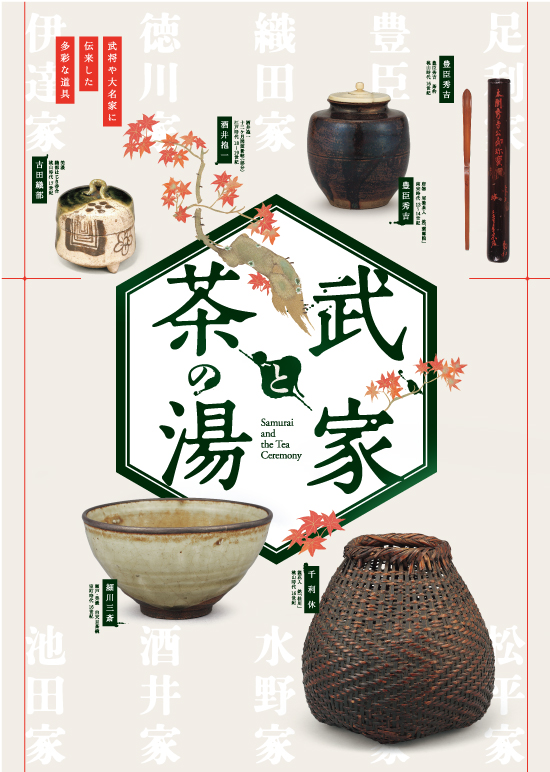Since the Kamakura Period (1185-1333), Japanese warrior classes such as shōgun (literary means “general”; ruler of Japan in the Kamakura Period) and daimyō lords had prized highly tea utensils and artworks imported from overseas as karamono, or “Chinese things.” During the Momoyama Period (1568-1603) and the following years of the beginning of the Edo Period (1603-1868), Sen no Rikyū (1522-1591) had established a wabi (simple and rustic) style of tea ceremony and his disciples and followers such as Furuta Oribe (1545-1615) and Kobori Enshū (1579-1647) contributed to create the new currents of the tea ceremony. As Oribe and Enshū who were daimyō themselves and practiced actively as tea masters, the tea ceremony became one of the mandatory trainings assigned to the worrier class in the Edo Period and, thus, many daimyō were devoted to the art, such as Matsudaira Fumai (1751-1818).
For this exhibition, some 60 pieces of tea utensils and artworks related to samurai are selected from the Murayama Collection of the Kosetsu Museum of Art.
